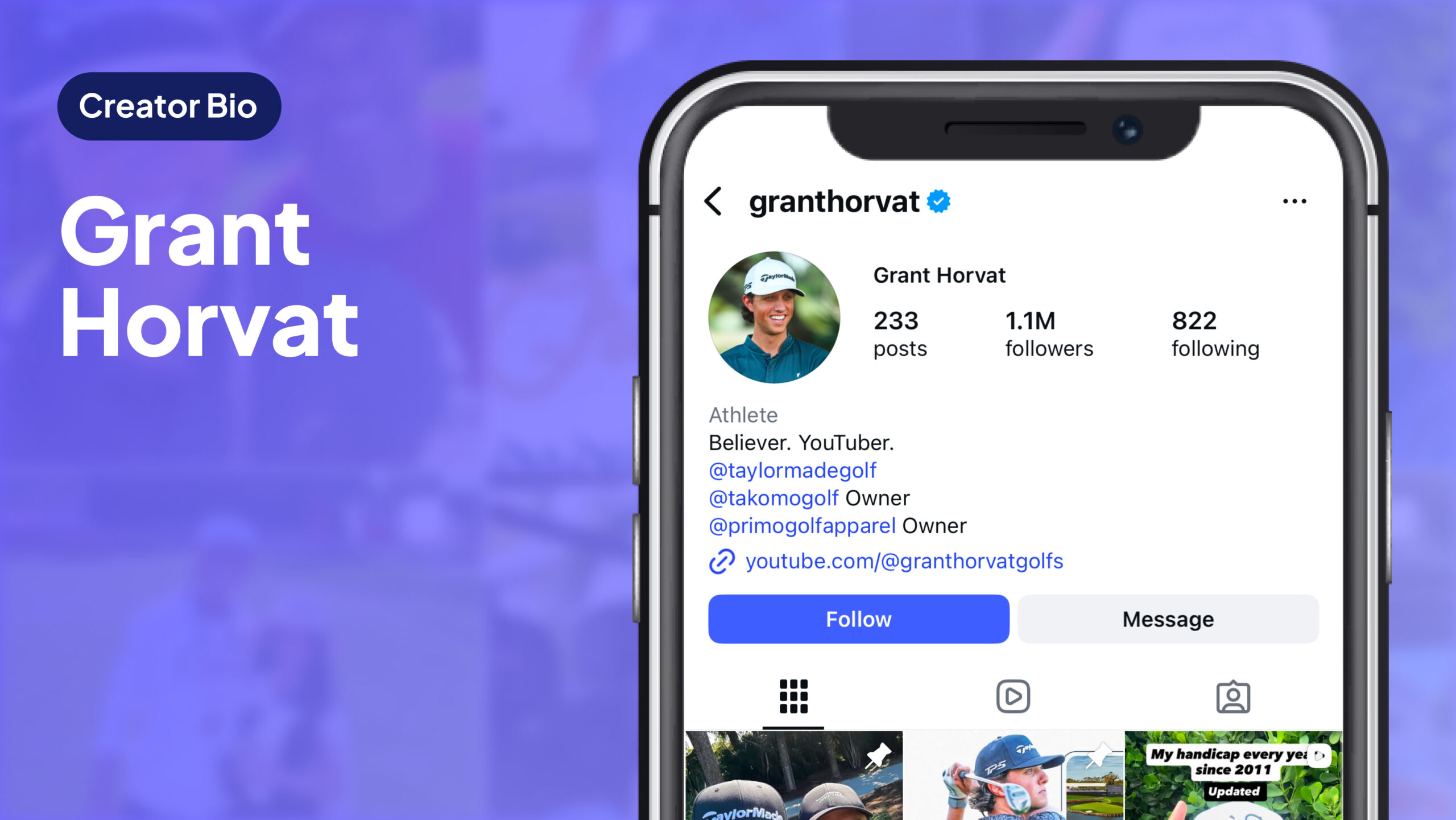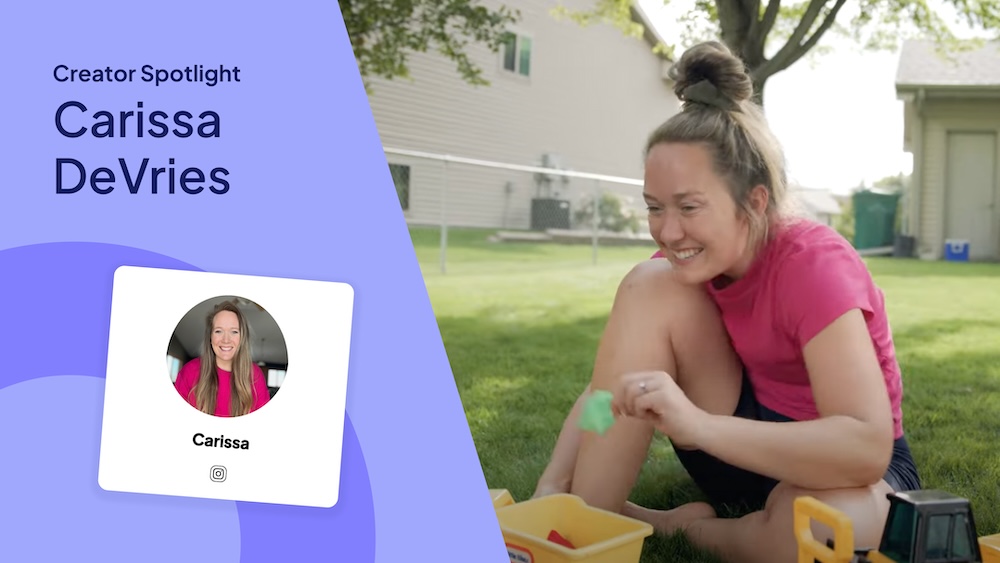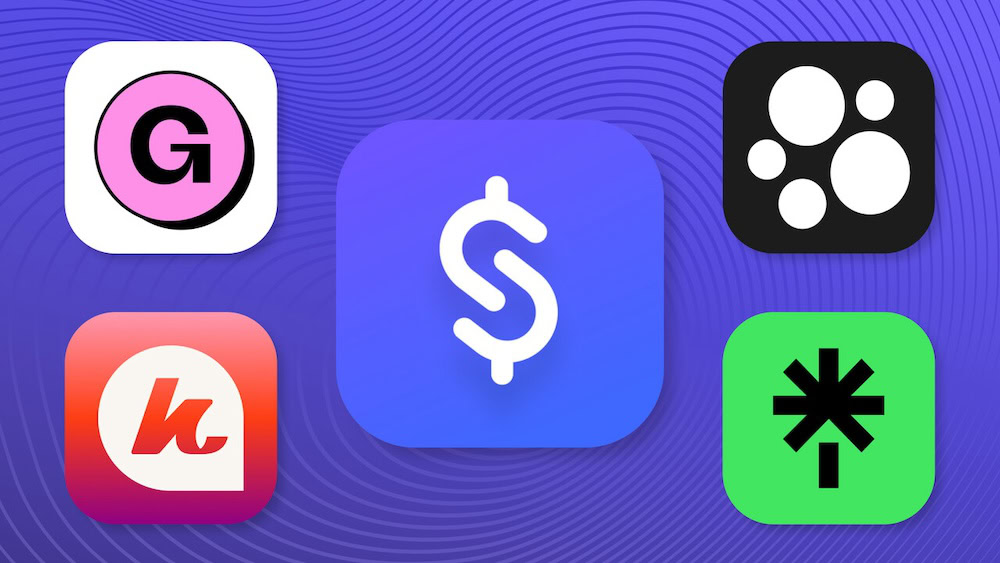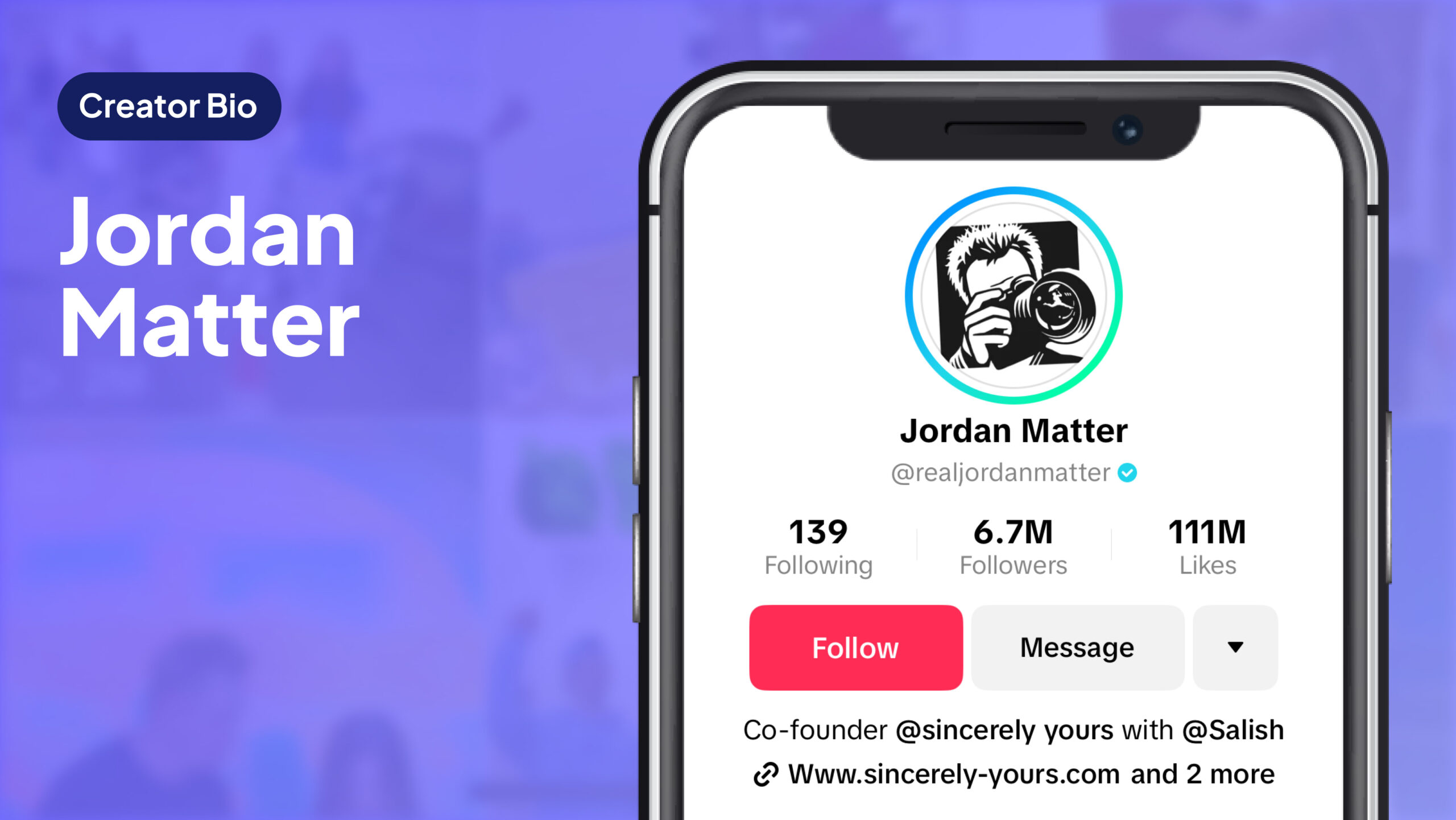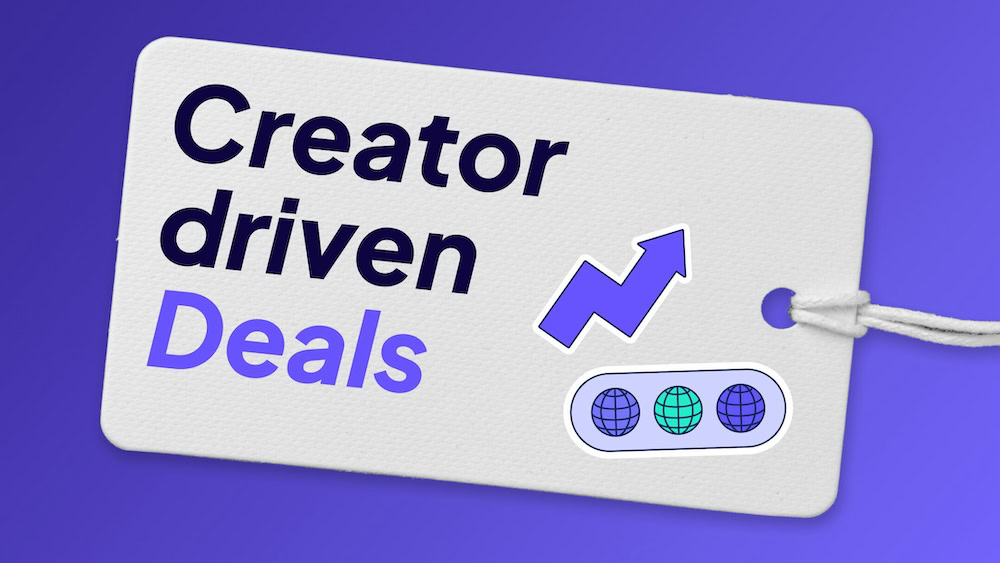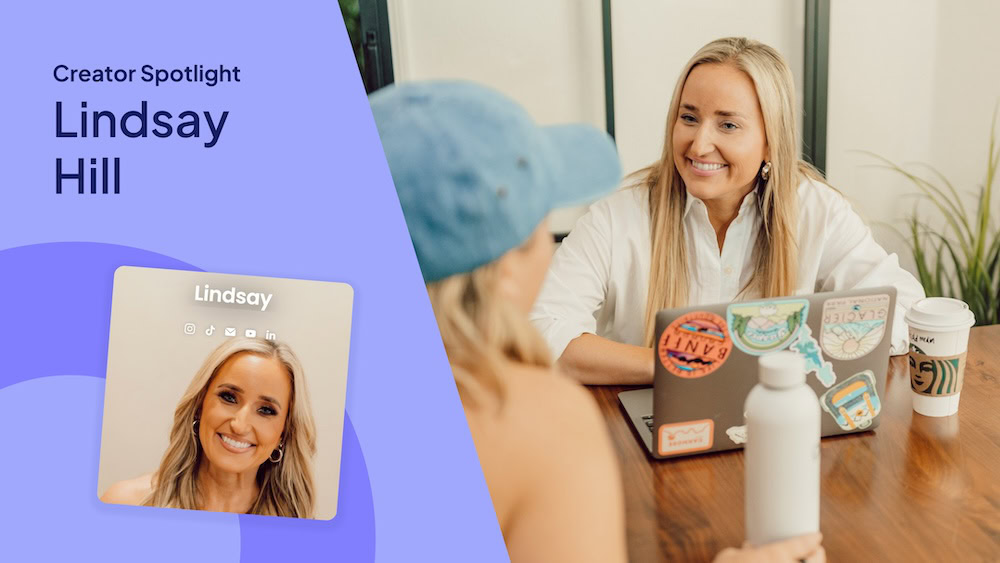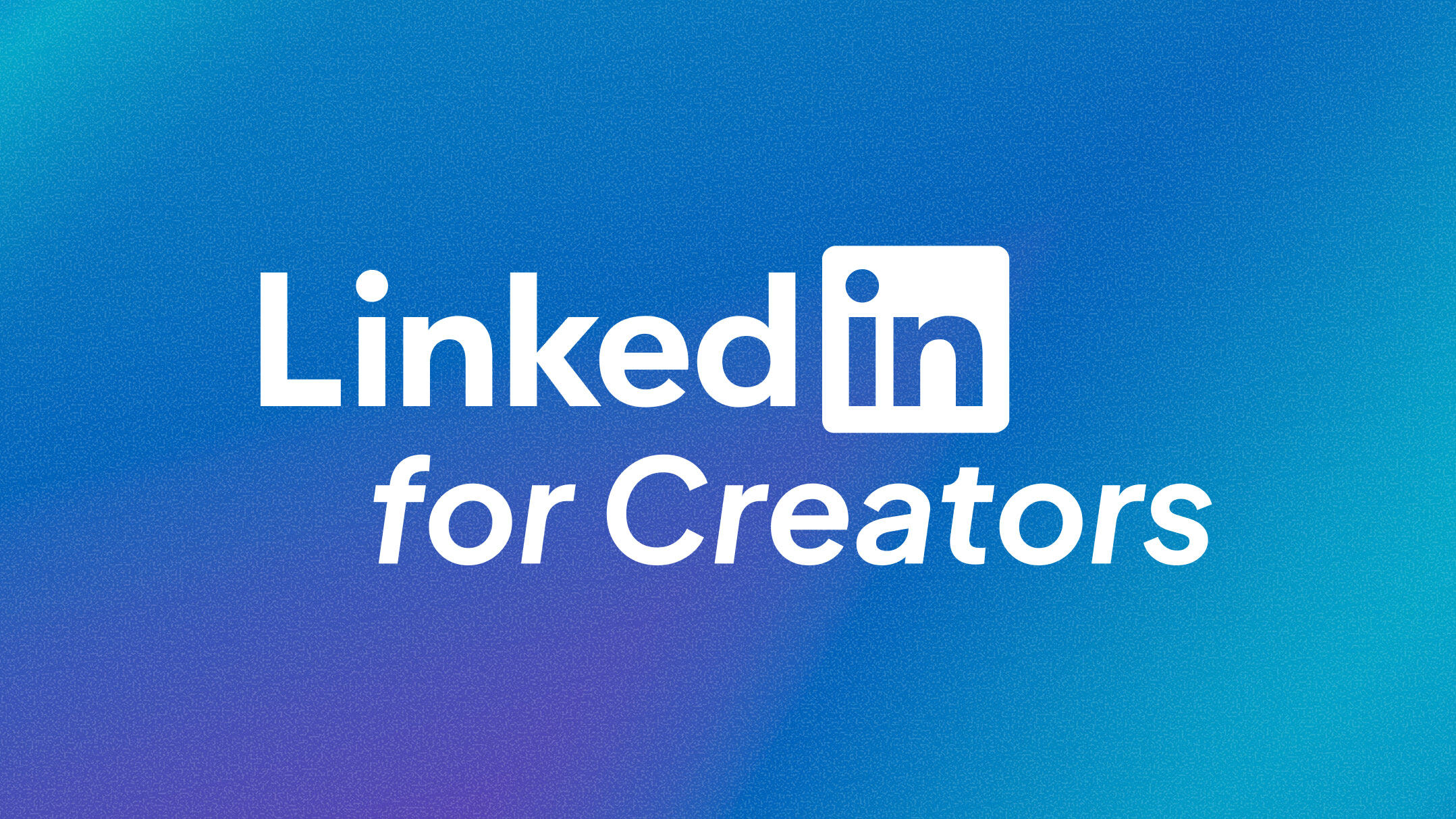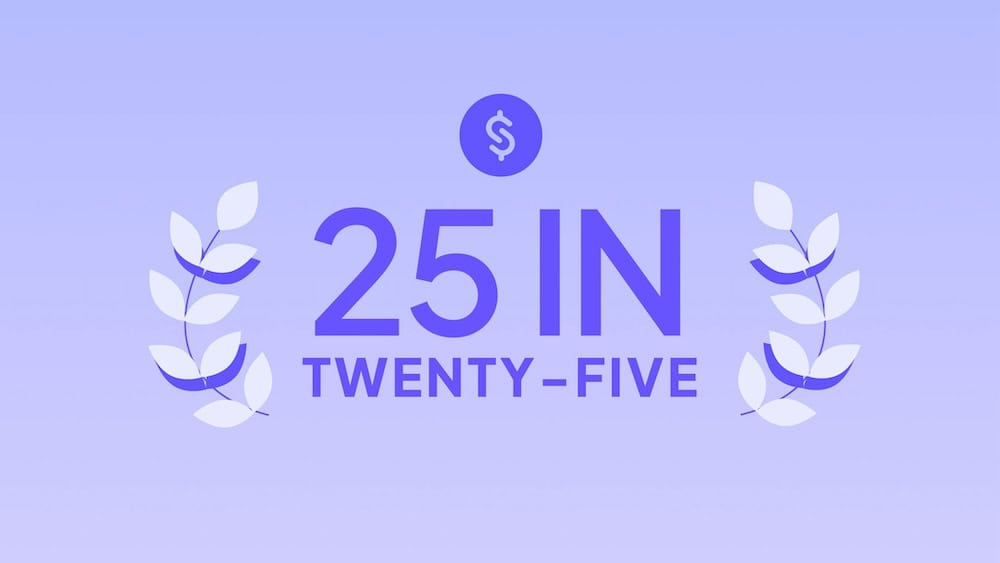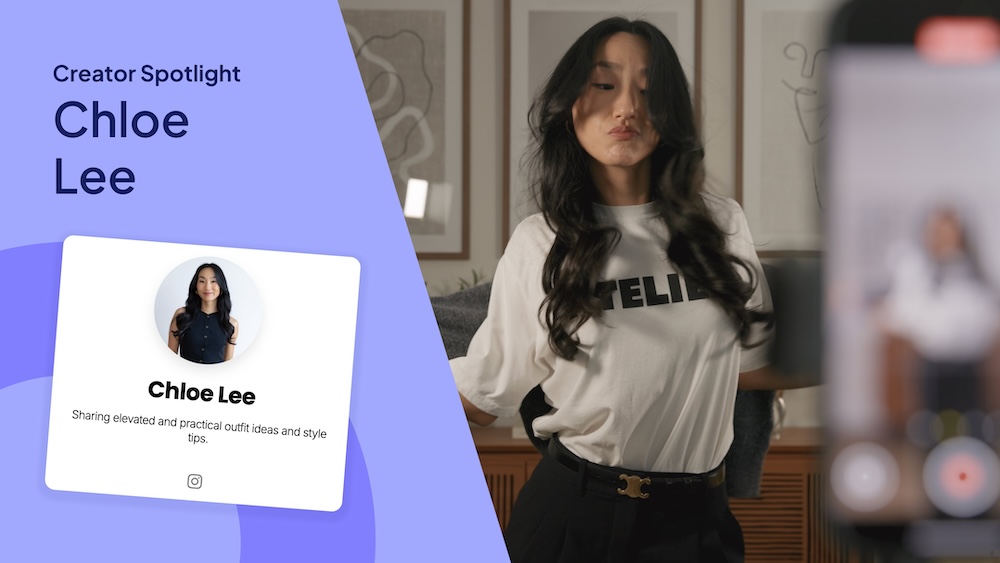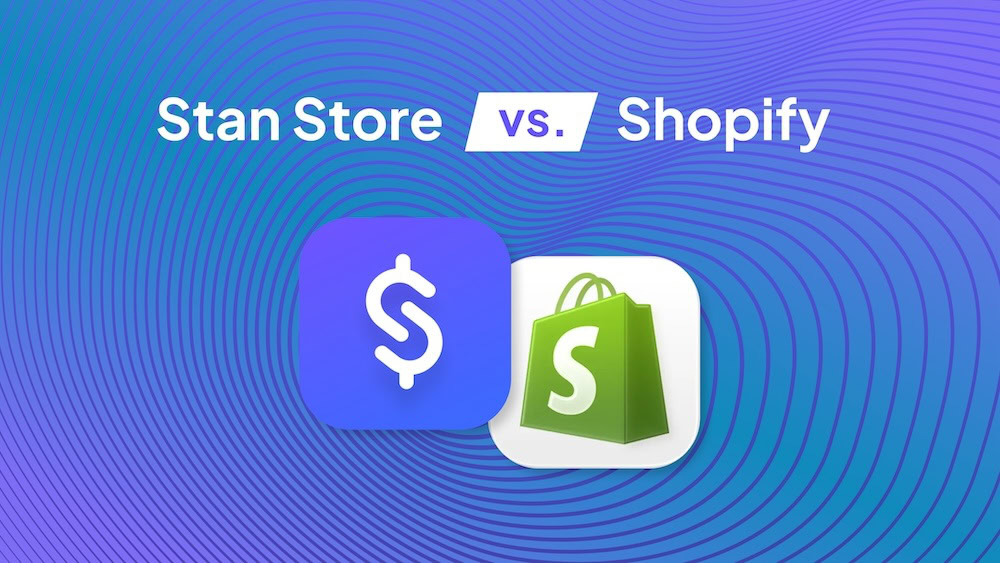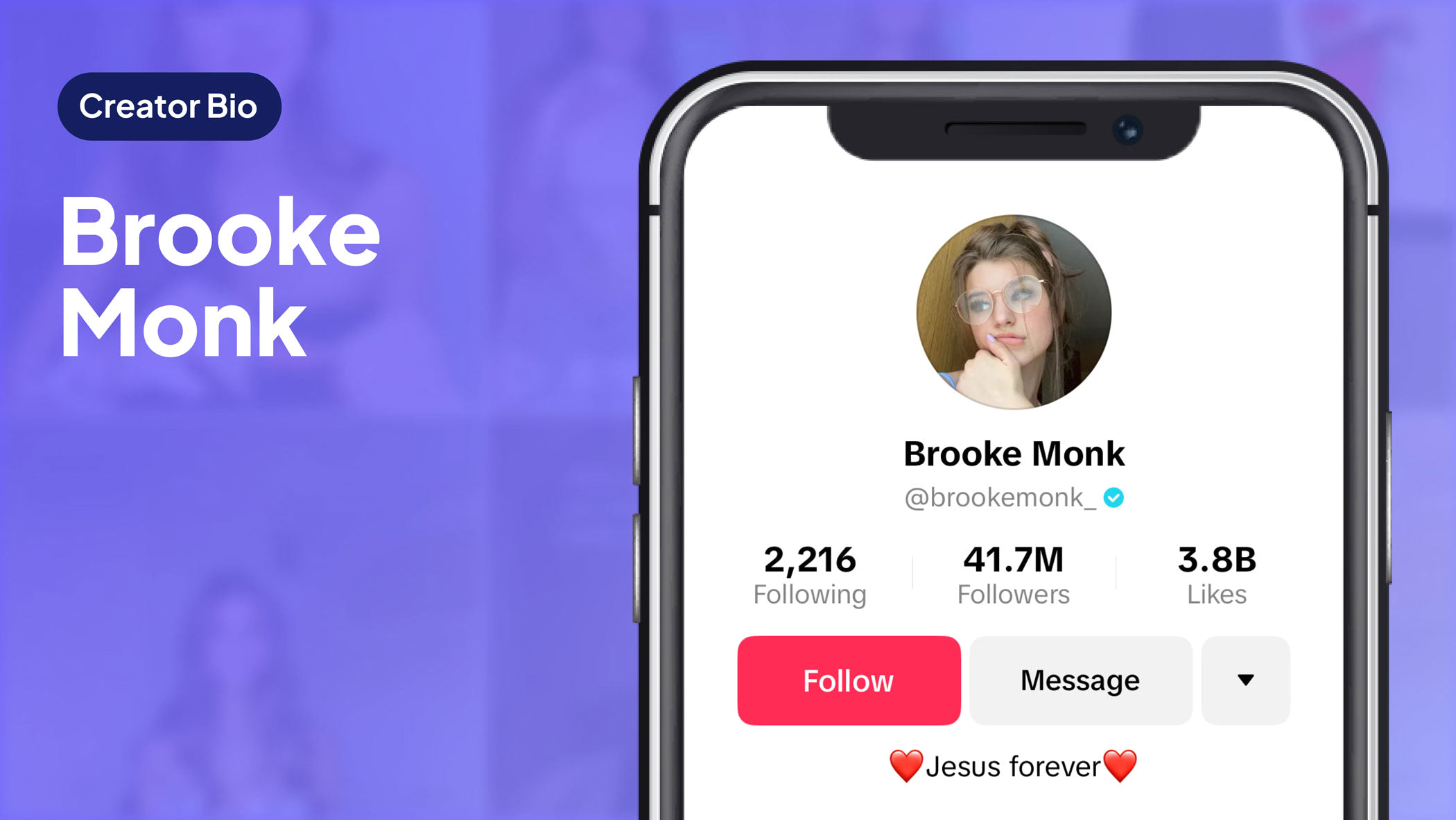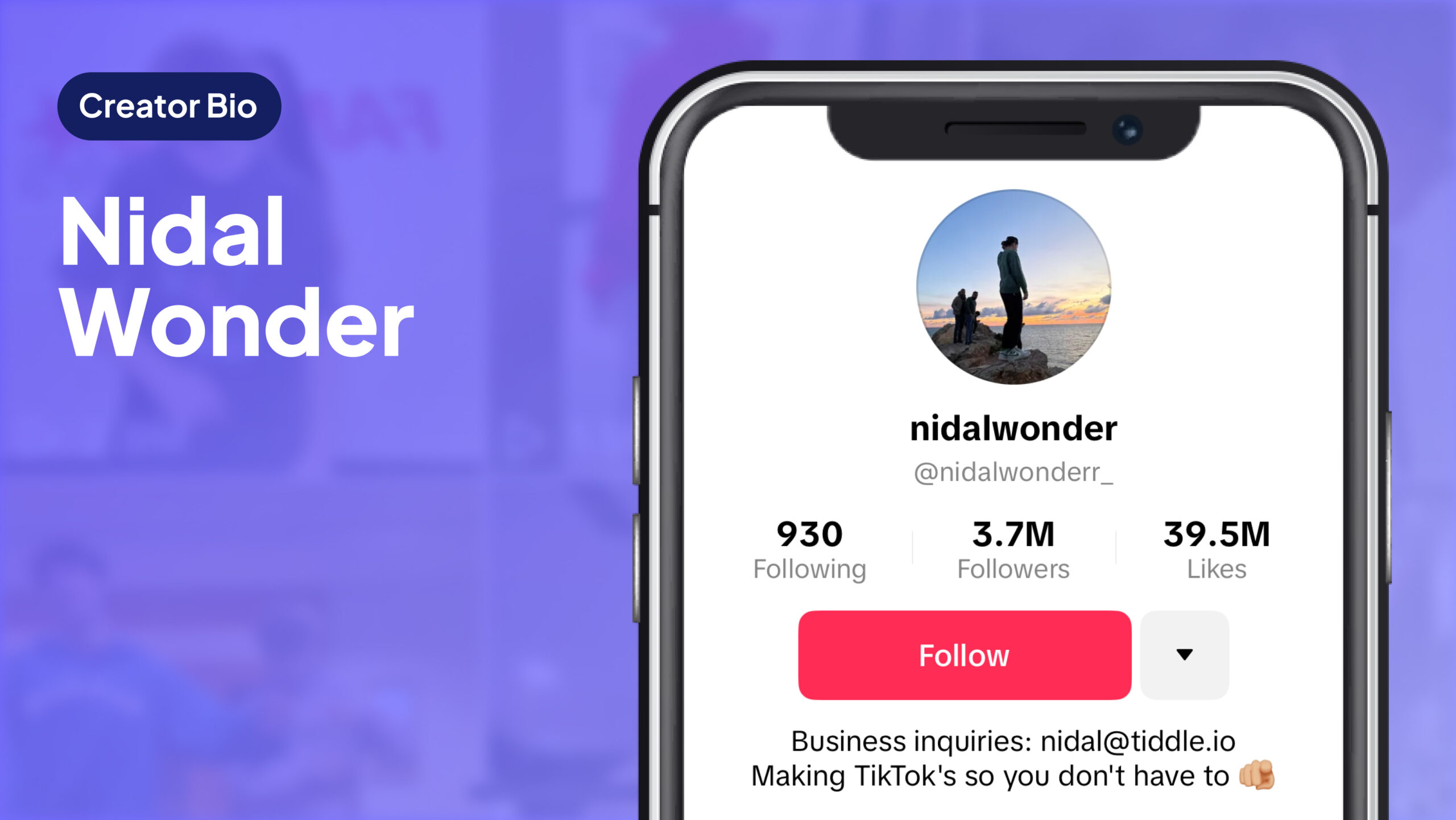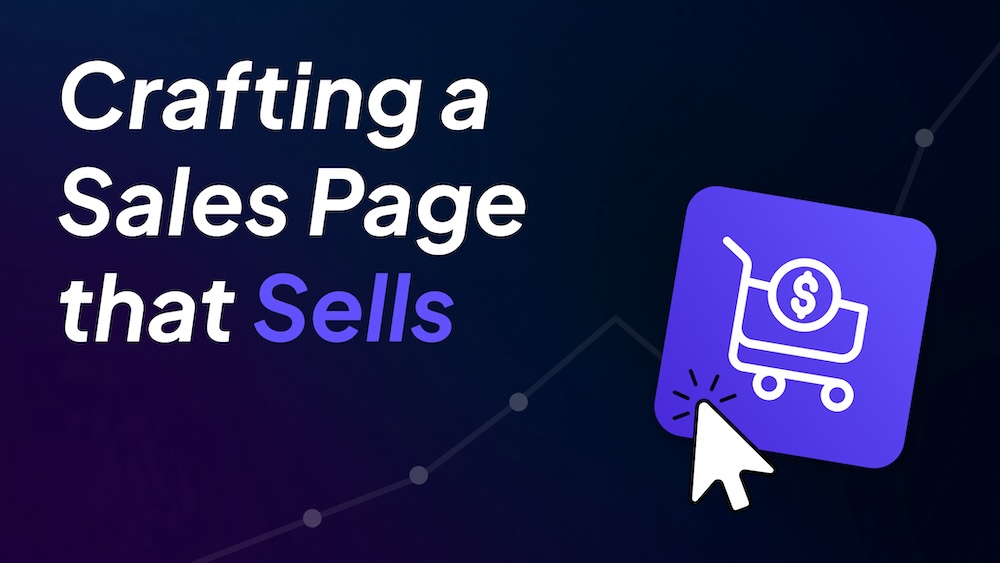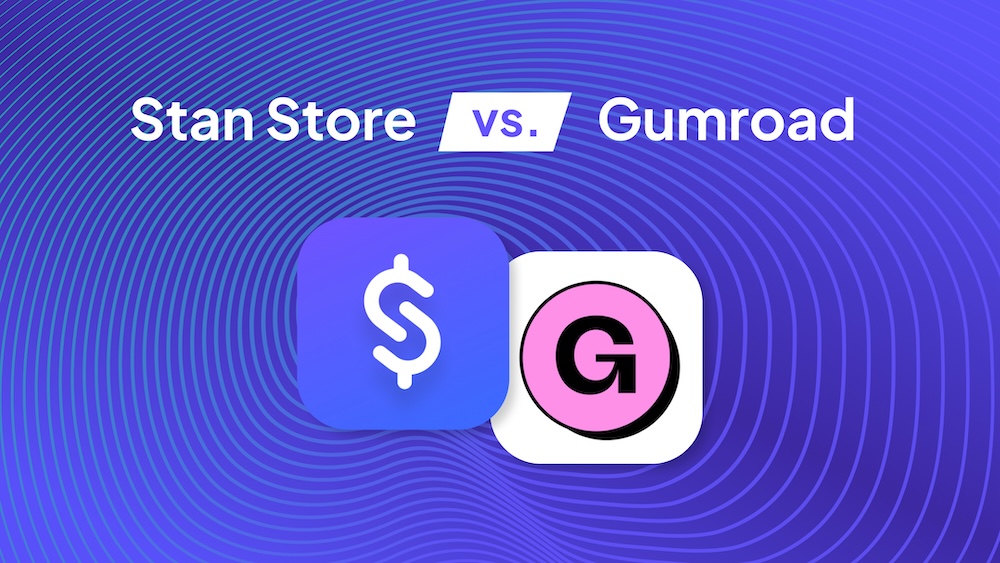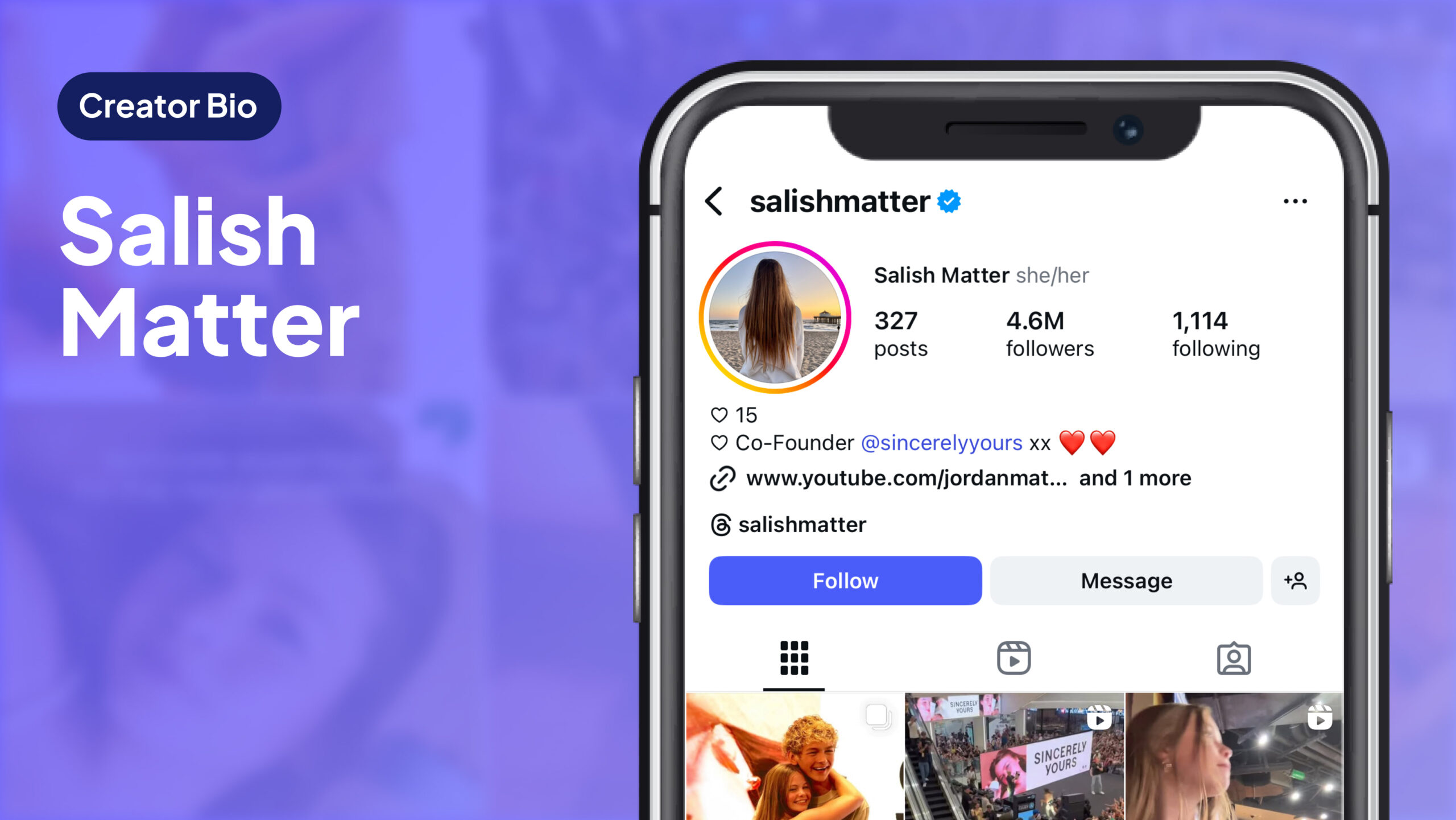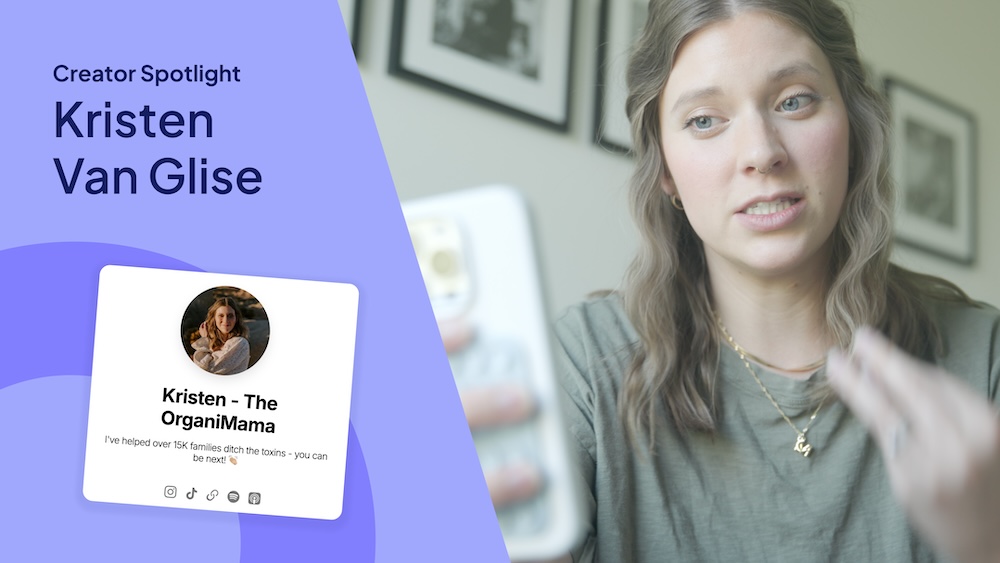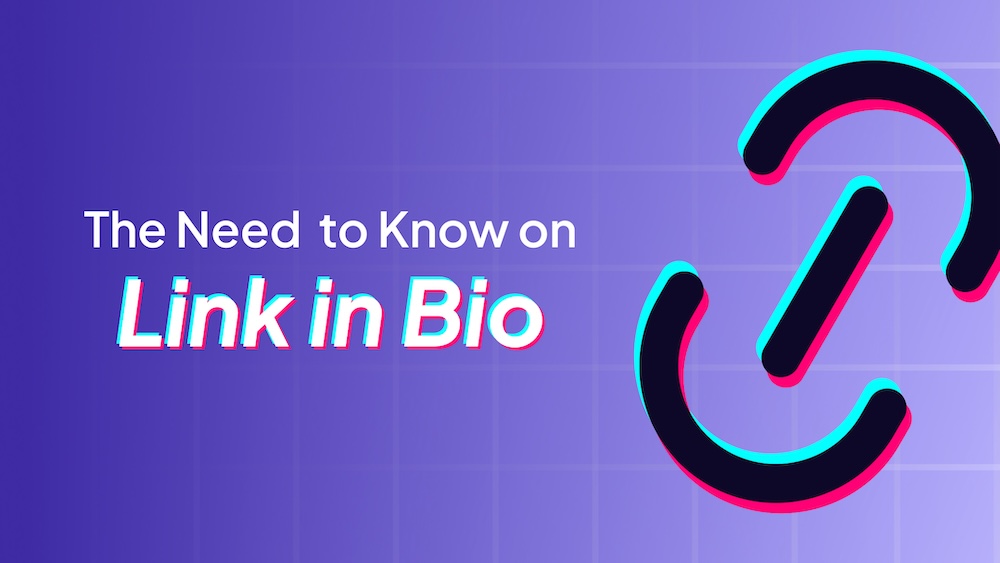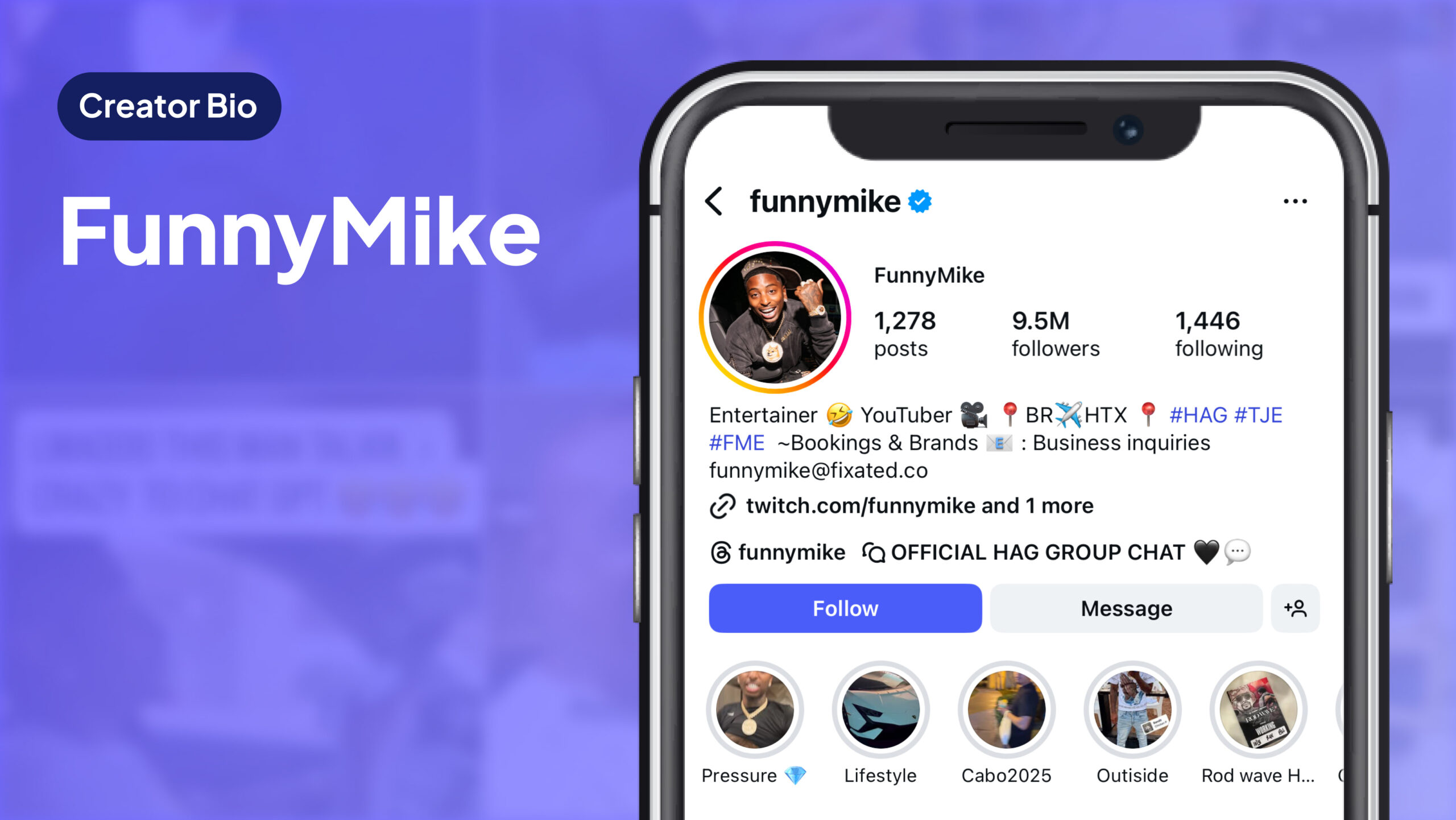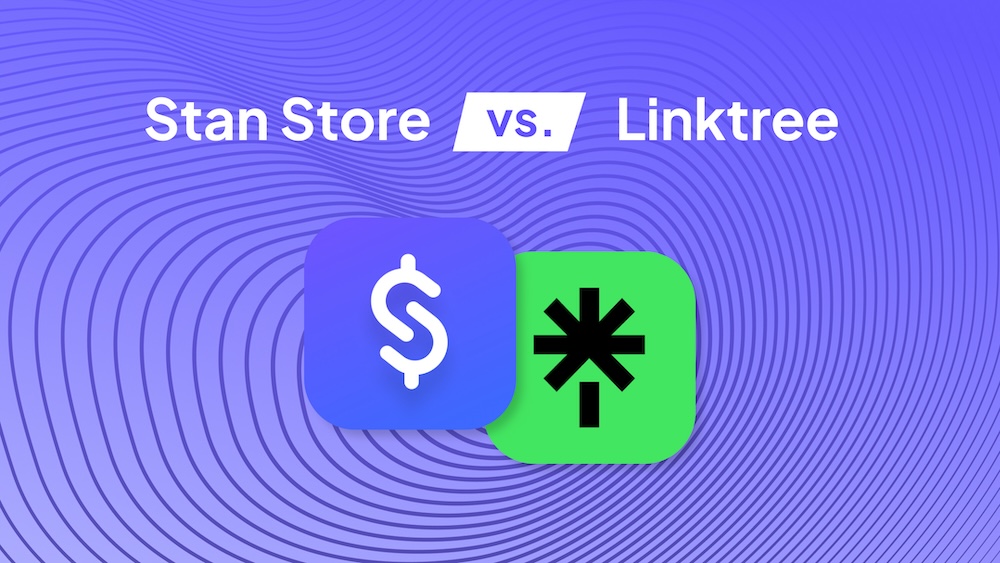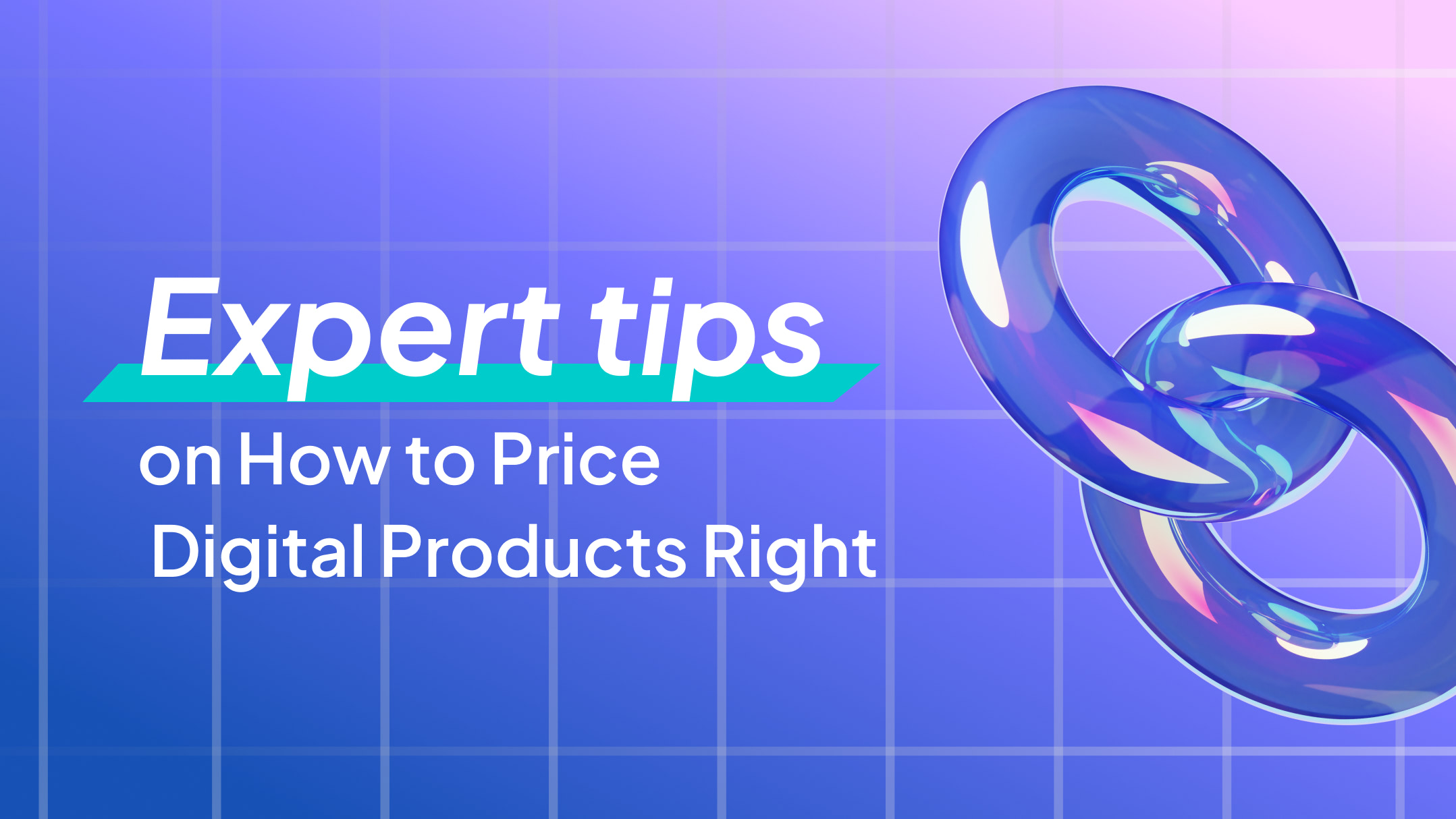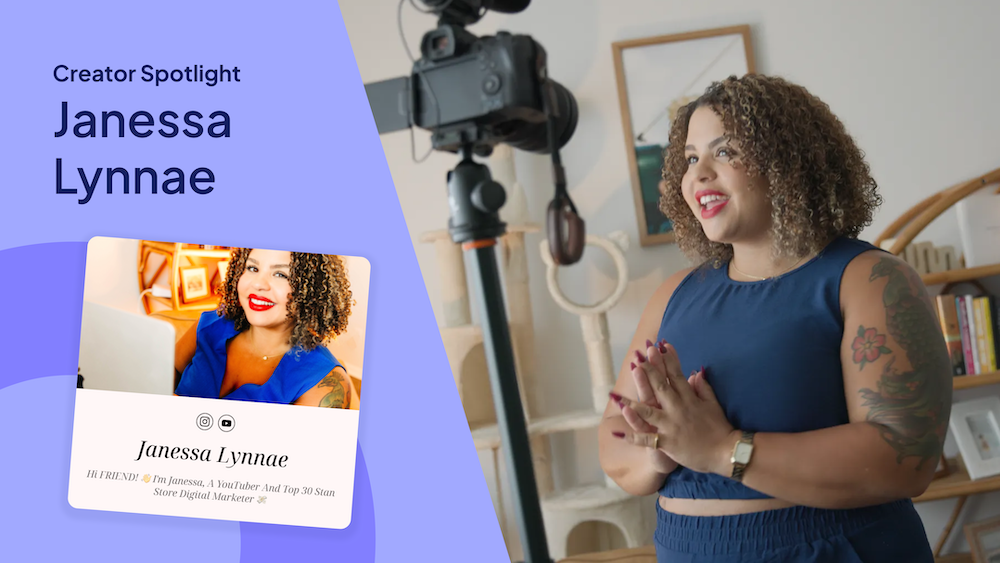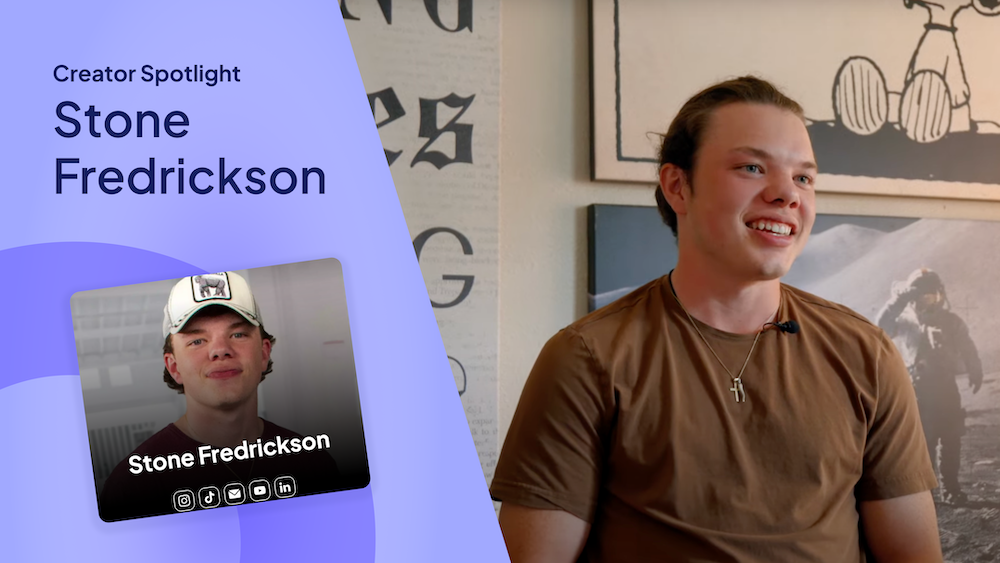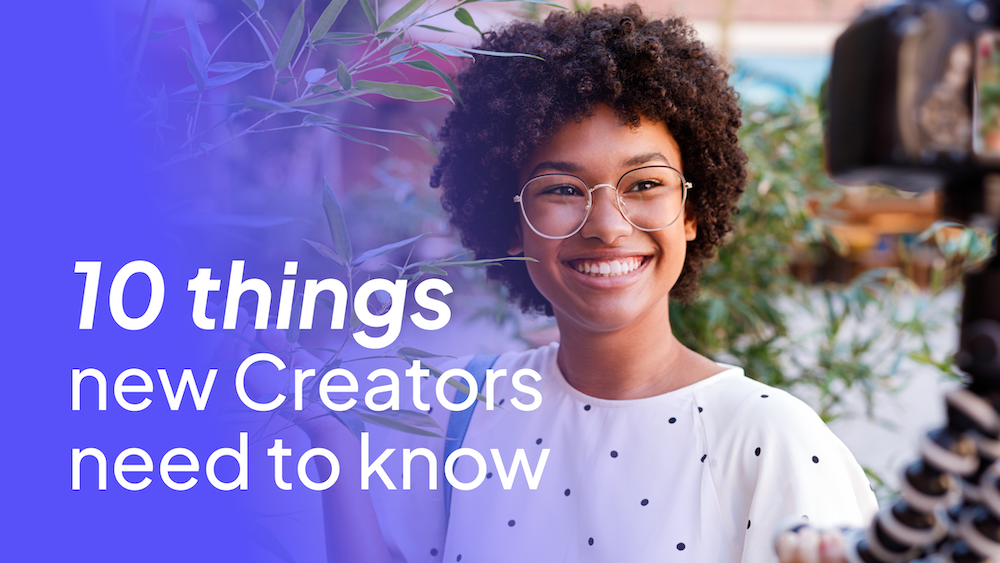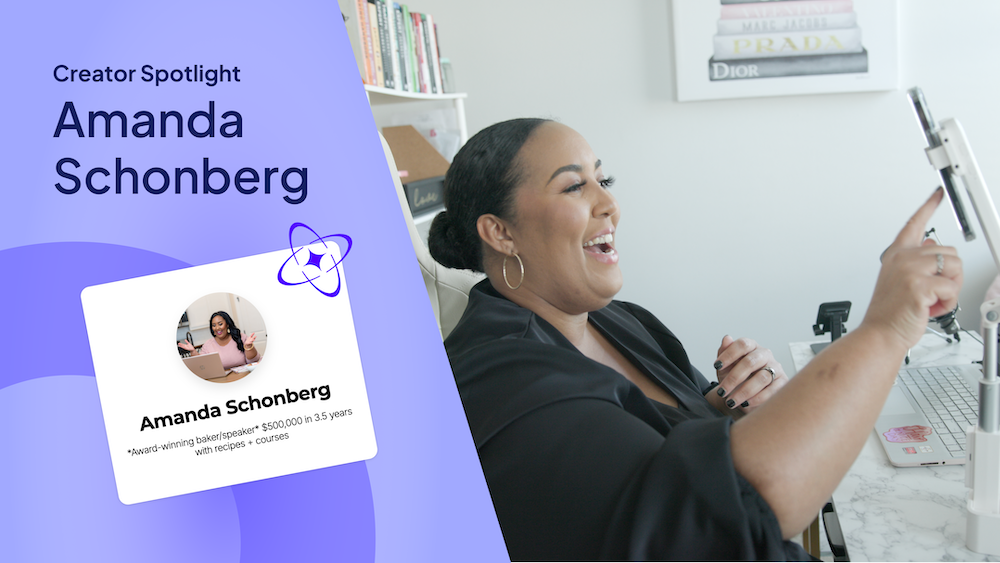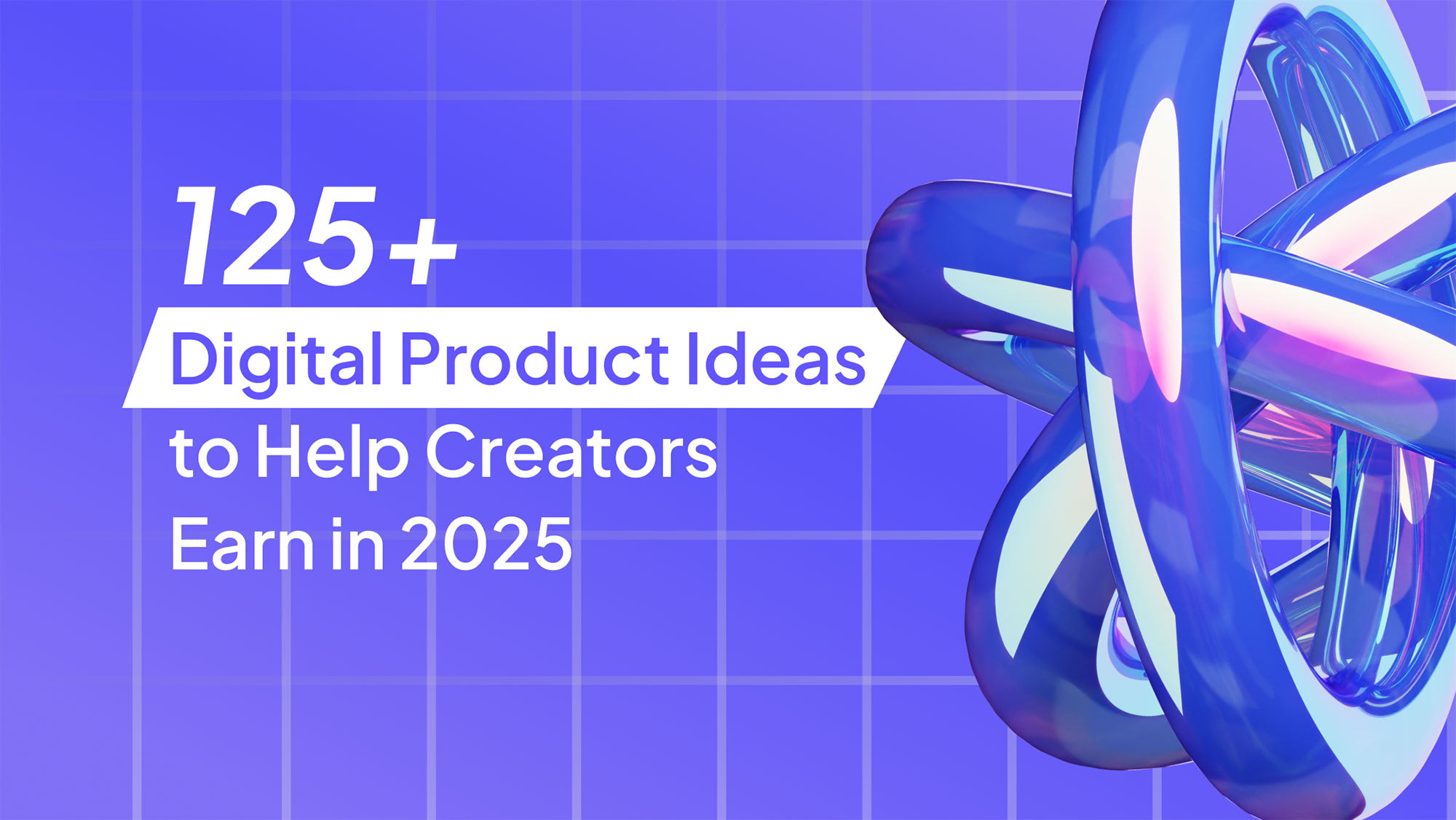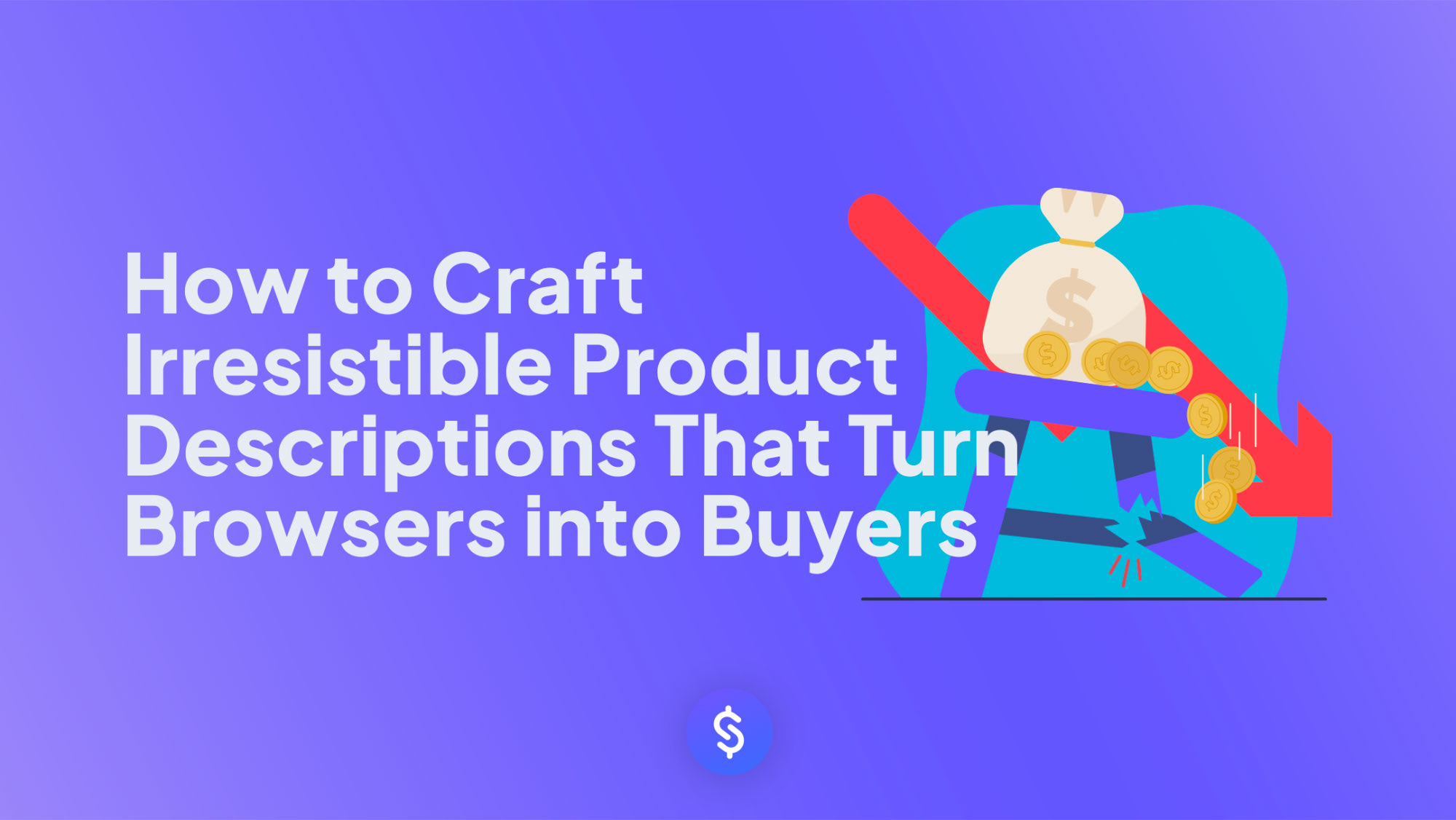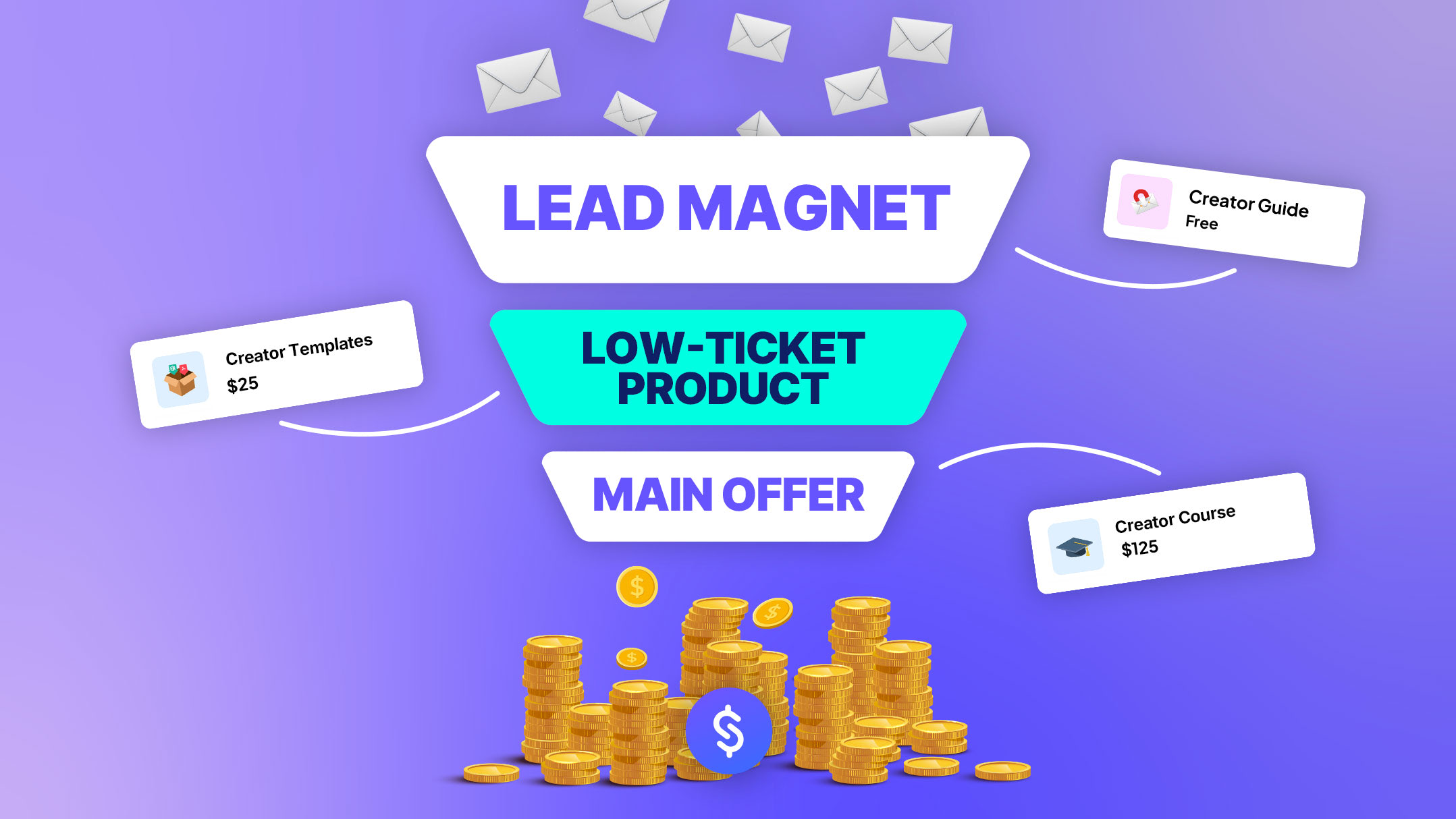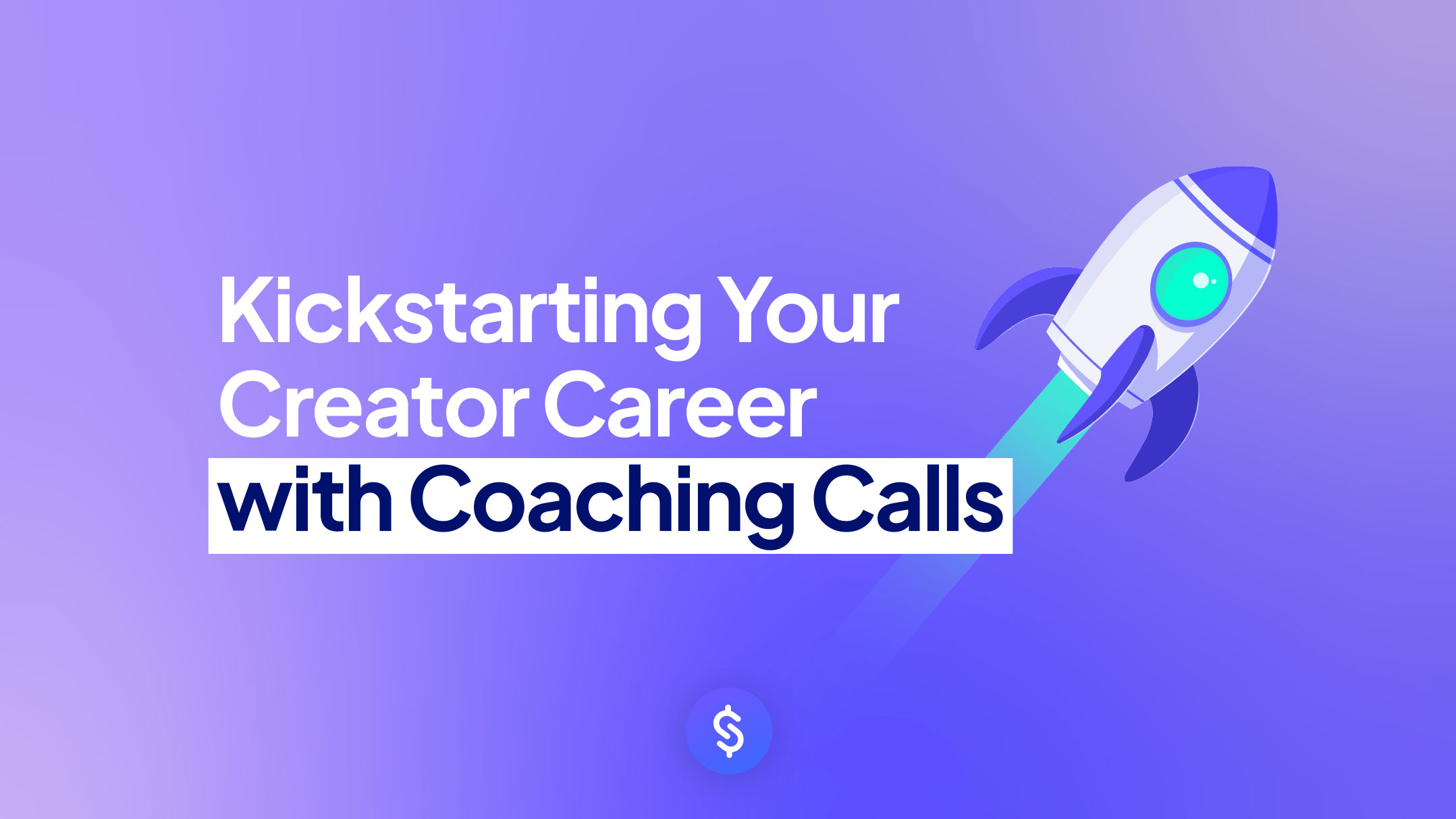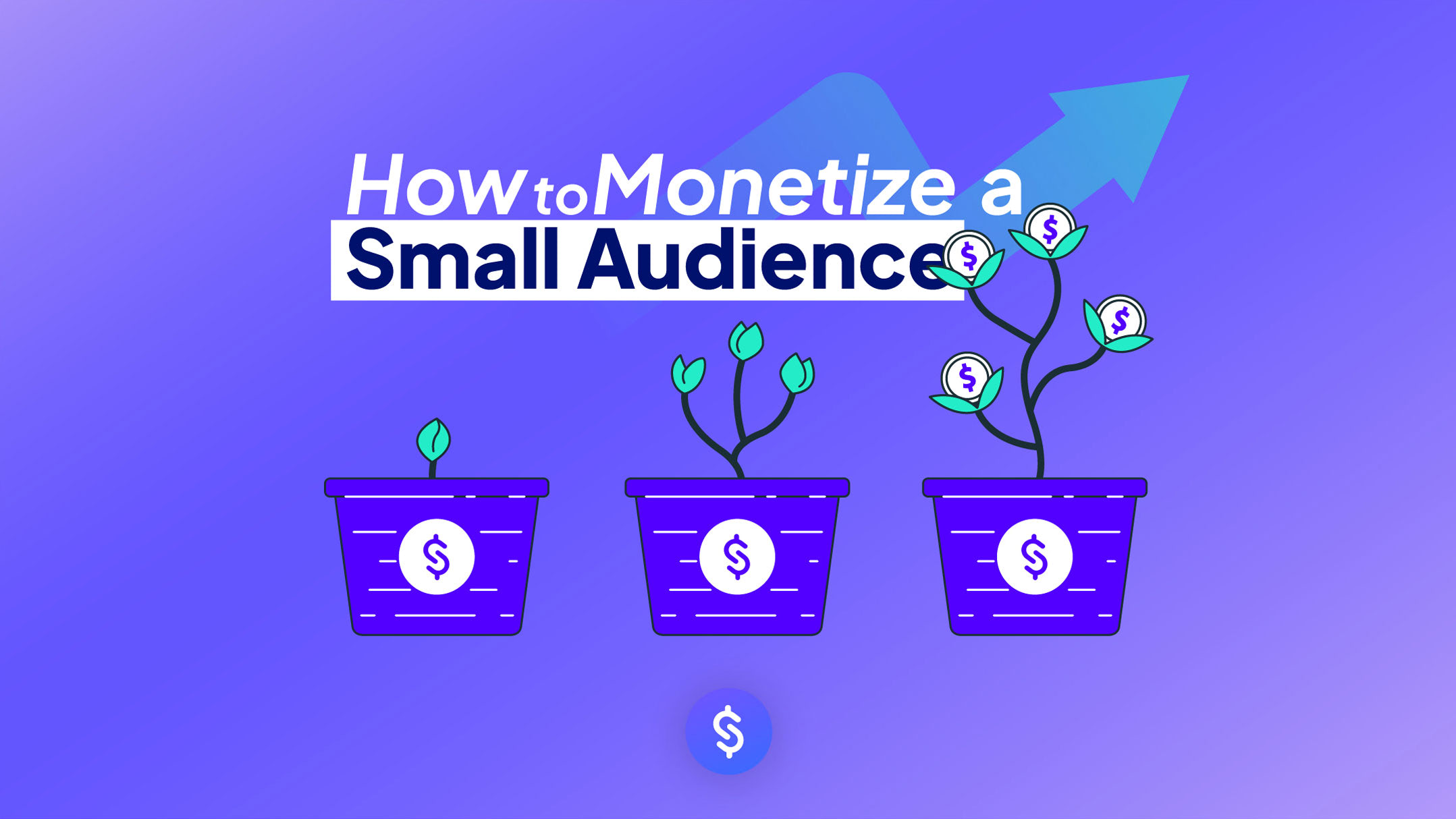TL;DR: Product idea validation means proving that people actually want and will pay for what you’re creating before you build it. Start by understanding your audience, turning their pain points into clear product ideas, and testing demand through quick feedback, MVPs, and pre-sales. Measure real signals like signups and purchases, refine what works, and build with confidence. Once your idea is proven, Stan makes it easy to turn that validated idea into a real digital product your audience can buy today.
Most creators don’t fail because their ideas are bad. They fail because they never validated them.
They spend weeks filming a course or designing a Notion template, only to hear crickets on launch day. No sales. No feedback. Just silence.
When this happens, it’s rarely a talent problem. It’s a proof problem.
You can have the right niche and a loyal audience, but if you don’t know whether people will actually pay for your idea, you’re still guessing—and guessing is expensive.
That’s what product idea validation is about: finding real evidence that your digital product is worth creating.
If you’ve ever launched something that flopped or hesitated to start because you weren’t sure it would sell, this guide will help you change that.
Let’s start by clarifying what product idea validation means and why it matters more than most creators realize.
Table of Contents
- What Is Product Idea Validation (and Why It Matters for Creators)
- The 7-Step Framework to Validate Your Digital Product Idea
- Common Mistakes to Avoid When Validating Digital Product Ideas
- Tools and Techniques for Validating Digital Product Ideas
What Is Product Idea Validation (and Why It Matters for Creators)
Product idea validation means finding real proof that people want what you plan to sell before you create it.
It’s how you confirm that your product solves a problem your audience is willing to pay for, not just something they say sounds “interesting.”
Think of it as testing the ground before you plant. Instead of spending weeks building an entire course or ebook, you start small—seeing how people respond to the idea itself.
Most creators skip this step. They assume that because followers like their content, they’ll buy anything. But interest and intent are two different things. Validation helps you spot that difference early.
Without it, you risk pouring time into a product no one needs. With it, you build something people are already waiting for.
That’s the foundation of every successful digital product.
The 7-Step Framework to Validate Your Digital Product Idea
Understanding what validation means is one thing. Actually doing it is another.
Thankfully, you don’t need complicated systems or market research teams to validate your idea. You just need a structured way to test demand before building.
This seven-step framework will help you do exactly that.
1. Start With Audience Clarity
Before you can validate a digital product idea, you need to know who you’re validating it for. That clarity forms the foundation of every successful product launch.
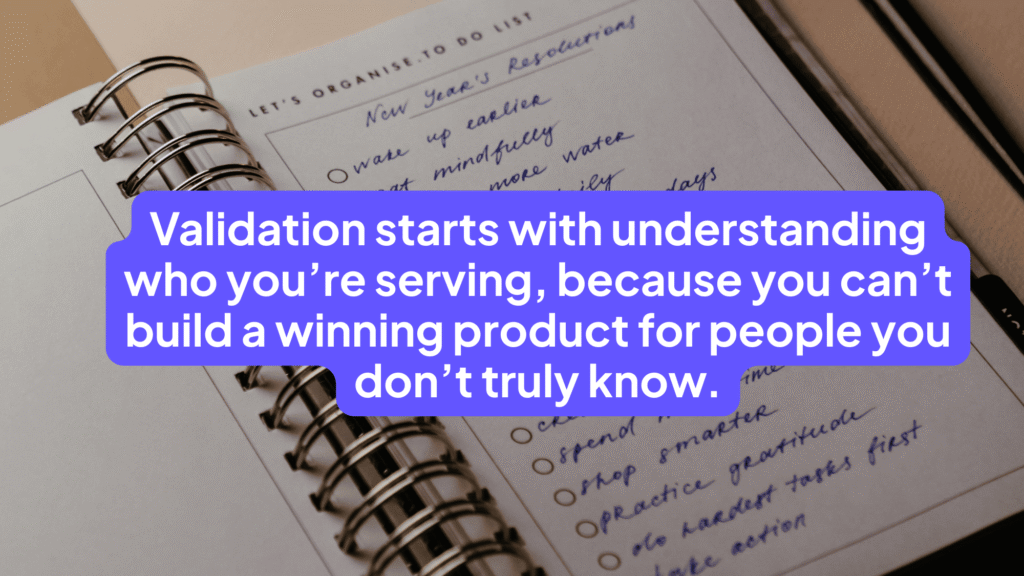
Many creators skip straight to building, assuming their followers automatically want whatever they make. But validation starts long before you test your idea. It begins with understanding the people behind your audience metrics.
When you’re clear on who you’re serving and what they truly struggle with, you can spot patterns that point to products worth creating.
Identify Who You’re Building For
The first step in validating any product idea is knowing exactly who your offer is meant to help. Without that clarity, every survey, post, or test you run will attract vague feedback that leads you nowhere.
Ask yourself:
- What are they trying to achieve right now?
- What’s holding them back from that goal?
- How do they describe their problem in their own words?
If you’re a fitness creator, your audience might not just be “people who want to get fit.” It could be busy professionals who want simple 20-minute home workouts. If you teach marketing, your real audience might be coaches who want clients without relying on ads.
The more specific you get, the easier it becomes to validate a product idea that resonates. You’re not trying to reach everyone—you’re trying to reach the right ones.
Find Pain Points That Actually Need Solving
Once you’ve identified who you’re building for, the next step is to pinpoint what problem they urgently want solved. That’s where product idea validation really begins.
Scroll through your content comments, note which topics spark debates or long replies, and highlight the phrases people repeat. Those phrases often reveal the emotions behind their struggles: overwhelm, confusion, inconsistency, or fear of wasting time.
For example:
- If your followers keep saying they “don’t know what to post,” a content-calendar template could solve that.
- If they complain about “spending hours editing videos,” a short-form editing checklist might be your winning product.
Validation often starts with listening. The more you study real audience language, the more accurately you can design solutions they’re ready to buy.
2. Turn Pain Points Into Product Hypotheses
Once you’ve identified the biggest problems your audience faces, the next question is simple: Which of those problems are people most willing to pay to solve?
That’s the heart of digital product idea validation—turning raw frustrations into clear, testable product ideas.
Most creators stop at “I know what my audience struggles with.” But clarity about pain points means little unless you translate it into potential solutions you can validate.
Define Your Core Value Proposition
A value proposition is a single, concrete statement that explains what problem you solve, who you solve it for, and what result they’ll get.
You can frame it using this simple formula:
“I help [specific audience] achieve [specific outcome] by [specific method or product].”
Examples:
- “I help busy moms stay consistent with workouts using 20-minute home routines.”
- “I help small-business owners write better Instagram captions with a swipe-file toolkit.”
Notice how each one is clear and specific. A clear value proposition becomes the hypothesis you’ll test throughout the rest of the validation process.
Prioritize Based on Demand Signals
You might have three or four potential ideas at this point. Not every one deserves your time. Validation means ranking them based on evidence, not emotion.
Here’s how to gauge demand signals:
- Engagement Data: Look back at your content analytics. Which topics consistently outperform others? A recurring spike in engagement often points to strong interest.
- Audience Requests: If you’ve received multiple DMs or comments asking you to teach, sell, or share more about a specific subject, that’s a direct sign of unmet demand.
- Search Behavior: Use free tools like Google Trends, YouTube Search, or TikTok Search to see what people are already looking for. If there’s consistent search interest around your topic, your idea has market validation beyond your own audience.
When you combine these signals, the strongest ideas will rise to the top.
3. Validate With Audience Research
Before you build anything, you need to confirm that your idea resonates beyond your assumptions.
This is where audience research comes in. It helps you gather real feedback, understand buying intent, and spot early signs of demand.
Too many creators rely on gut feeling. The smart ones talk to their audience, test their assumptions, and adjust based on what they learn.
Let’s look at a few ways to do that effectively.
Conduct Quick Polls or Surveys
The simplest way to validate an idea is to ask, but in a smart way.
Avoid broad, hypothetical questions like “Would you buy this?” because people tend to overpromise. Instead, ask questions that uncover real pain, urgency, and willingness to pay.
Examples:
- “What’s the hardest part about [goal/problem] right now?”
- “If there was a solution for [problem], what would make it worth paying for?”
- “Have you tried solving this before? What didn’t work?”
Use tools like Google Forms, Typeform, or Instagram question stickers to collect quick responses. You don’t need hundreds of replies; a few honest, detailed answers can tell you much more than dozens of short ones.
As you review responses, pay attention to:
- Repeated frustrations or phrases
- Mentions of time, effort, or money lost (“I’ve wasted hours trying to…”)
- Signs that people have already tried other solutions
Those details reveal both demand and buying intent.
Analyze Competitors and Adjacent Creators
Another underrated part of product idea validation is analyzing what already exists.
If someone else is selling a similar product and doing well, that’s not a red flag. It’s confirmation that people buy in your niche. Your goal is to find gaps, not reinvent the wheel.

Look for:
- Topics that consistently sell well on platforms like Stan
- Offers with lots of positive reviews or strong engagement
- Comments or reviews where people say, “I wish this also included…”
That “I wish” is your entry point. It shows where current solutions fall short and where you can stand out.
For example, if you see several creators selling Notion templates for productivity, but buyers keep asking for “a version built for freelancers,” that’s a validated micro-niche.
Test Through Content
Content is one of the fastest ways to test demand for free.
Create a short post, story, or video around your product topic and watch how your audience reacts. You’re not selling yet. You’re studying attention.
For example:
- Post a short video titled “3 mistakes I made before launching my first digital product.”
- End with a teaser: “If I created a simple toolkit that helps you avoid these, would you want it?”
Measure:
- Comment depth (“This is exactly what I need” vs. “Nice post”)
- DMs or replies asking for more details
- Saves or shares, which are stronger indicators of intent than likes
These small validation experiments act like micro-surveys in disguise. Each piece of content gives you data on which direction to pursue.
4. Build a Minimum Viable Product (MVP)
At this stage, you’ve gathered feedback, spotted patterns, and identified which idea has the strongest demand. Now it’s time to turn that idea into something tangible—something small you can test in the real world.
That’s where a Minimum Viable Product (MVP) comes in.
Creating an MVP means launching the simplest version possible to validate demand before investing more time or energy.
What an MVP Looks Like for Digital Creators
Your MVP is a sample, a preview, or a test run—just enough to measure if people will engage, sign up, or buy.
Examples:
- A one-page guide that previews a larger ebook.
- A mini-course made up of two lessons from a full program.
- A template or checklist that solves one core part of a bigger system.
- A live workshop that tests demand before turning it into a recorded course.
Each of these helps you validate your product idea quickly.
Pre-Validate With Small Actions
Once your MVP is ready, put it in front of your audience and track reactions. Think of this as micro-validation—small actions that signal genuine interest.
Here’s how:
- Share it with your most engaged followers or email subscribers and ask for feedback.
- Offer it as a free or low-cost resource and measure downloads, signups, or completions.
- Post about it on your socials and observe the engagement you get: questions, shares, or direct messages.
If people take these actions without heavy persuasion, that’s your signal. Each download, comment, or signup is a small piece of proof that your idea resonates.
Even better, ask follow-up questions:
“What part did you find most useful?” “What would you want to see next?”
Those answers become live data to guide your next iteration.
The MVP Feedback Loop
The best creators treat their MVP like a living experiment, not a finished product.
Once you release your first version, gather feedback and analyze it honestly. If your audience loved it, note what worked and double down. If it fell flat, adjust things. Sometimes the problem isn’t the idea but how it’s framed.
For example:
- Your offer might need clearer positioning (“Create a Notion system to save 5 hours a week” performs better than “Productivity system”).
- Your price point might not match perceived value.
- Or you could be solving the right problem but for the wrong audience segment.
The goal is to learn quickly and cheaply. The sooner you complete this feedback loop, the sooner you’ll know if your product idea has true potential.
5. Pre-Sell Your Idea
You’ve validated your audience, refined your offer, and tested a simple MVP. Now comes the most definitive proof of all: getting people to pay for it.
Pre-selling is the ultimate validation test. It’s where ideas stop being theoretical and become measurable.
If people are willing to pay before the product is finished, you have undeniable evidence that your idea is worth pursuing.
Why Pre-Selling Works
Most creators believe validation ends when people say, “I’d buy that.” But talk is cheap. True validation happens only when money changes hands.
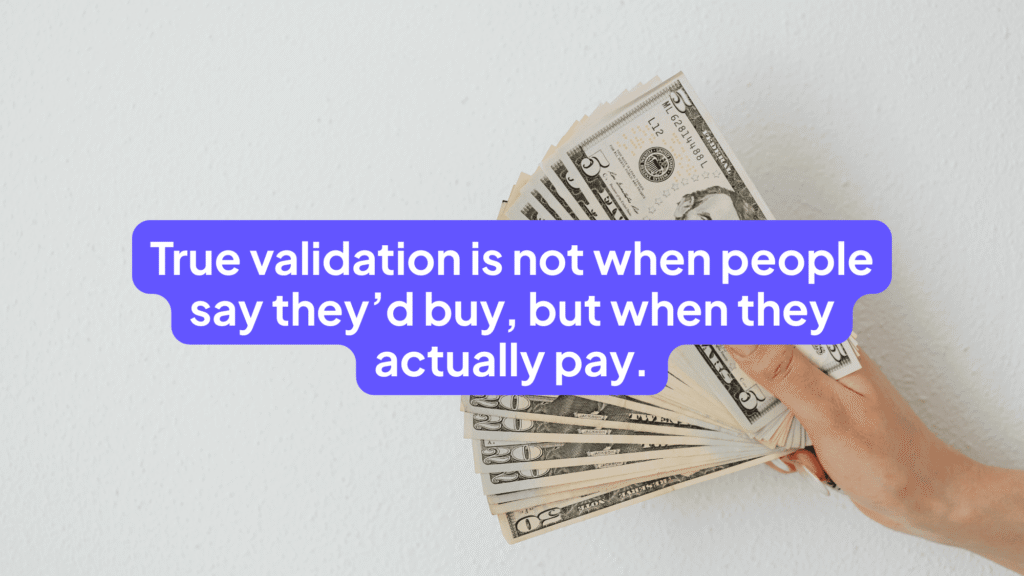
Pre-selling works because it forces clarity on both sides. For your audience, it’s a small but meaningful commitment. For you, it’s a confidence check—you now have paying customers waiting for delivery, not just interested followers.
Beyond validation, pre-selling also funds your creation process. It gives you revenue upfront, so you can build the product with fewer risks.
Instead of hoping your idea sells later, you confirm it now.
How to Pre-Sell Without Feeling “Salesy”
Pre-selling doesn’t have to feel pushy. When done right, it builds trust because you’re transparent about what you’re creating and why.
Here’s a framework that works especially well for creators:
a) Announce What You’re Building
Tell your audience what you’re working on and why. This signals exclusivity and collaboration.
Example:
“I’m creating a step-by-step guide that helps creators plan and launch digital products in one week. I’m opening early access for 20 people who want to help shape it.”
b) Create a Simple Landing Page or Checkout Link
Use a clean, no-fluff page with:
- What the product is
- Who it’s for
- What result it delivers
- When it will be ready
- Early-bird pricing or bonuses
Keep it short and promise delivery transparency: “Goes live in 3 weeks. Early buyers get first access.”
c) Set a Cap or Deadline
People act when there’s clear scarcity or urgency. Cap the number of early buyers or close pre-orders by a specific date.
d) Gather Feedback From Buyers
Early customers often become your best beta testers. Ask them what they expect, what they’re most excited about, and what results they want. This turns your pre-sell stage into a feedback loop that sharpens the final version.
The Tool That Makes Pre-Selling Easy
You don’t need a complex setup to pre-sell your product idea.
Platforms like Stan make it simple to:
- Set up a checkout link in minutes
- Collect payments upfront
- Deliver updates or bonus materials automatically
Stan is designed for creators who want to validate and launch quickly. You can build your product page, link it to your socials, and start collecting pre-orders—all from one link.
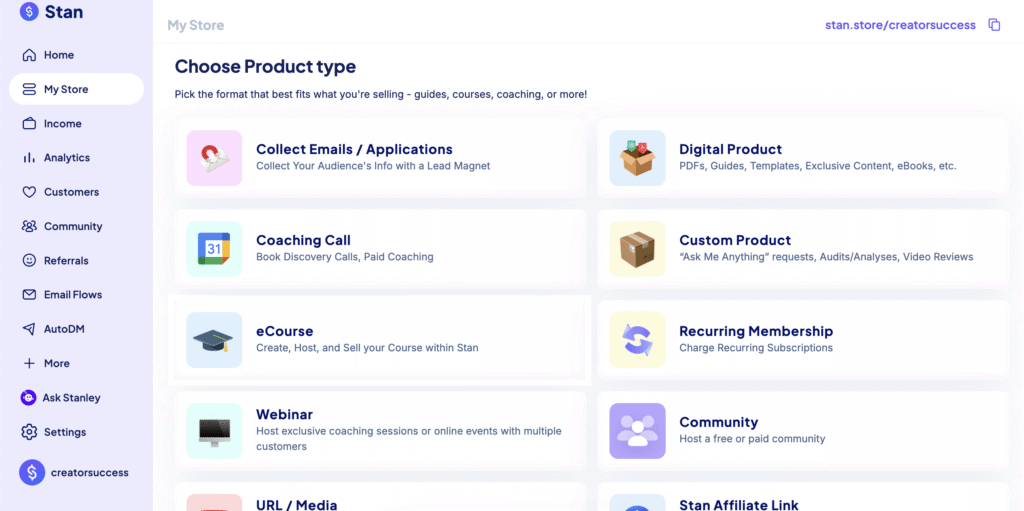
Want to test your idea with real buyers this week? Start your 14-day free trial of Stan and pre-sell your next product in minutes.
6. Measure Your Validation Results
At this point, you’ve done the work. You’ve defined your audience, refined your value proposition, gathered feedback, built an MVP, and even pre-sold it.
Now comes the step that separates intuition from insight: measuring your validation results.
Not every signal matters equally. Likes, comments, or vague interest aren’t validation. What you want are behavioral signals that show real intent.
Here are the metrics that matter most when validating product ideas:
Interest Metrics
These show whether people care enough to learn more. Look for signals like:
- Waitlist signups
- Email opt-ins for your offer
- Link clicks from social posts
If your audience is consistently opting in, it’s an early sign of product-market alignment.
Engagement Metrics
These help you understand curiosity and message clarity. Key engagement signals include:
- Comment depth (“I need this” or “When does it drop?” vs. “Looks good”)
- Saves and shares
- DMs asking for details
Engagement doesn’t confirm buying intent, but it’s a sign your messaging resonates.
Conversion Metrics
These are the gold standard for digital product idea validation. Strong conversion indicators include:
- Pre-orders or payments
- Checkout completions
- Conversion rate (sales ÷ traffic or interest)
If you’re converting above 2–5% from your audience pool, you’ve found something with clear demand.
Retention or Follow-Up Interest
After the initial test, do people ask, “When’s the full version?” Continued curiosity signals long-term potential.
7. Refine, Relaunch, and Scale
Once you’ve confirmed that your audience wants what you’re offering, the next step is to refine your product, strengthen your positioning, and scale your results.
Think of this phase as continuous validation. You’re not just testing an idea anymore; you’re optimizing it for long-term growth.
Iterate Based on Feedback
Your early customers are your best data source. Their feedback tells you exactly where to improve.
Read every comment, email, or survey response. Look for patterns:
- What did they love most about your product?
- What confused or frustrated them?
- What features or additions did they request?
If several people mention the same issue, it’s a signal—not a coincidence. Addressing those insights can easily double your product’s appeal without creating something entirely new.
For example:
- If users found your templates helpful but wanted more customization, version two could include editable fields or a bonus tutorial.
- If they wanted faster results, shorten your program or simplify the steps.
This kind of refinement makes your offer sharper and more valuable over time.
Reposition or Repackage for a Stronger Fit
Sometimes, your idea works but your messaging doesn’t. You might need to reposition the same product to align with your audience’s priorities.
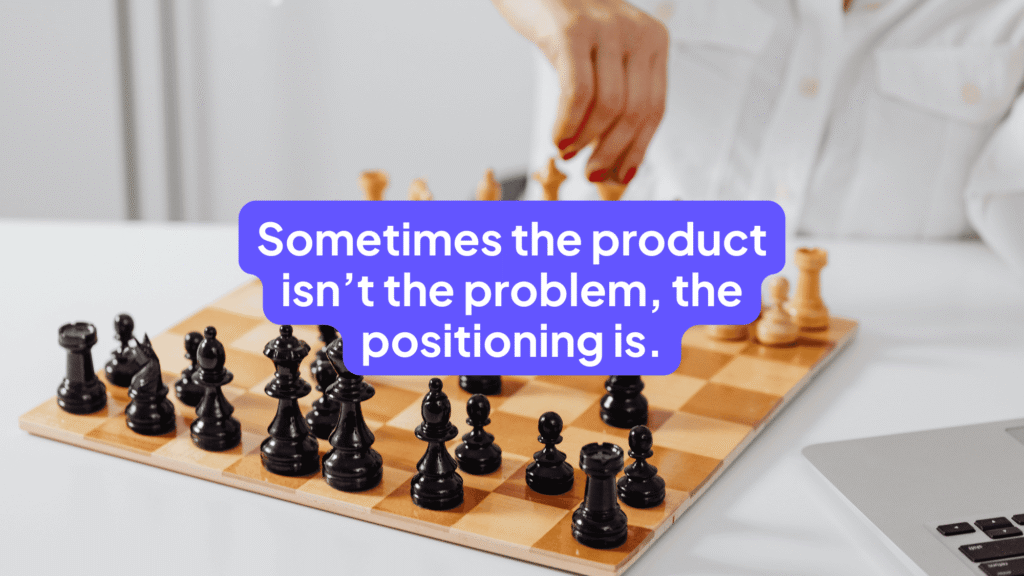
Repackaging can take many forms:
- Changing the headline or product name to make the transformation clearer
- Updating visuals or branding to match your niche better
- Adjusting the price to fit perceived value
Even a small shift, like reframing “Instagram Content Planner” to “30 Days of Plug-and-Post Reels Prompts,” can reposition your offer as more immediate and actionable.
These tweaks often make the difference between steady sales and explosive ones.
Evolve One Product Into Many
Great validation results confirm what works and reveal clear opportunities for what to build next.
Once you’ve proven people want your solution, you can expand around it strategically:
- Turn a single guide into a full course.
- Add complementary templates or worksheets.
- Bundle products into a starter pack or membership.
Each new offer builds on audience trust you’ve already earned.
Common Mistakes to Avoid When Validating Digital Product Ideas
Even when you follow the right steps, it’s easy to fall into traps that distort your validation results. These mistakes make you think your idea is working when it isn’t, or convince you to quit when you’re closer than you realize.
Here are the most common ones to avoid:
1. Asking If People “Like” Your Idea
A polite “That sounds cool” isn’t validation. Likes, compliments, or generic enthusiasm don’t prove demand. Validation only happens when people take real action: joining your waitlist, pre-ordering, or giving detailed feedback.
If you’re only getting surface-level support, push further. Ask for commitment, not just opinions.
2. Building Too Much Before Testing
Many creators spend weeks perfecting a product before knowing if anyone wants it. That’s a recipe for burnout and disappointment.
You don’t need a polished course, full ebook, or fancy landing page to test your idea. Start with a minimum viable product, a simple version that measures interest.
3. Treating Engagement as Demand
A post going viral doesn’t mean your product will sell. Engagement measures attention, not purchase intent.
Someone can love your content but never pay for your offer. Focus on actions that require effort or money, such as signups, pre-orders, or purchases, not passive metrics like likes or views.
4. Ignoring Silence
Silence is feedback. If your audience doesn’t react to your surveys, posts, or pre-sell offers, that’s a sign the idea isn’t connecting.
It’s better to find that out early than after months of work. Revisit your problem statement, tweak your offer, or try a different angle.
Every “no” you get now saves you from a bigger one later.
5. Overcomplicating Your Validation Process
Validation doesn’t require complex tools or long surveys. You don’t need to analyze hundreds of data points or design a perfect funnel.
Simple beats sophisticated every time. Ask direct questions. Test one offer. Watch for measurable behavior.
If people respond quickly and clearly, you’re on the right path.
Tools and Techniques for Validating Digital Product Ideas
You don’t need expensive software or a massive audience to validate your product idea. What matters is using the right tools and techniques to collect real signals of demand quickly.
Below are practical tools creators use to research, test, and confirm what their audiences actually want before building anything big.
1. Surveys and Feedback Forms
Use tools like Google Forms or Typeform to gather focused feedback from your audience. Ask short, open-ended questions that uncover pain points and priorities:
- “What’s your biggest challenge when trying to [achieve X]?”
- “If you had a shortcut or resource for this, what would it look like?”
Keep it short—five questions or less. The best responses come when people don’t feel like they’re filling out a form but sharing frustrations.
2. Research Tools for Demand Validation
Before creating, check whether your idea aligns with real market interest. Free tools can help you get a quick pulse on search and trend data:
- Google Trends: Track whether your topic’s popularity is rising or fading.
- AnswerThePublic: See the questions people are searching about your niche.
- Reddit and TikTok Search: Explore discussions to spot recurring problems, requests, or product gaps.
These tools reveal what people are already asking for—valuable data for product idea validation.
3. Prototyping and Mockups
If your digital product idea needs a visual or structural test, mock it up before building the full version. Tools like Notion, Canva, or Figma let you create quick prototypes of templates, digital planners, or course outlines.
Share screenshots or short walkthroughs to gauge reactions. When people respond positively or ask when it’s launching, you’ve validated your direction.
4. Pre-Selling and Payment Tools
Pre-selling remains the most powerful validation method because it shows actual buying intent.
Stan makes this process simple for creators. You can create your product page, set up checkout links, and start collecting pre-orders. It removes the tech barriers that slow most creators down and helps you test your idea in real time.
Ready to prove demand before you build? Start your 14-day free trial of Stan and launch your pre-sale page in minutes.
5. Community and Feedback Channels
Validation isn’t only about data—it’s about conversation. Use your audience touchpoints like Discord, Facebook groups, or DMs to talk directly with potential buyers.
Ask:
- “What’s something you’ve been trying to fix or learn recently?”
- “What resources have helped you the most—and what’s still missing?”
Creators who build openly tend to validate faster because they listen to their audience in real time.
6. Quick Video Feedback
Sometimes the easiest way to validate your idea is to show it visually. Record a short walkthrough or demo using Loom and share it with your audience.
Video feedback works especially well for mini-courses, guides, or digital toolkits. When people comment, ask follow-up questions, or request early access, those are clear signs your idea resonates.
Every Great Product Starts With Proof
Passion gets you started. Proof keeps you in business.
Every successful creator eventually learns this: the products that make money aren’t always the flashiest. They’re the ones that solve a clear problem people already want solved.
That’s the power of validation. It removes the guesswork and lets your audience tell you what they value before you spend time creating.
So before you record another lesson or design another download, pause and test the idea. Let data guide your creativity. Build based on proof, not assumptions.
And when you’ve found that proof, Stan simplifies the next step by helping you turn validated ideas into digital products, mini courses, and memberships your audience can buy instantly.





